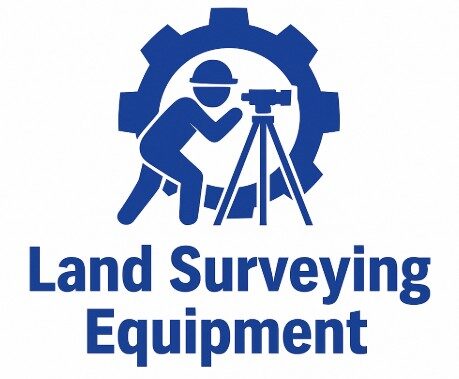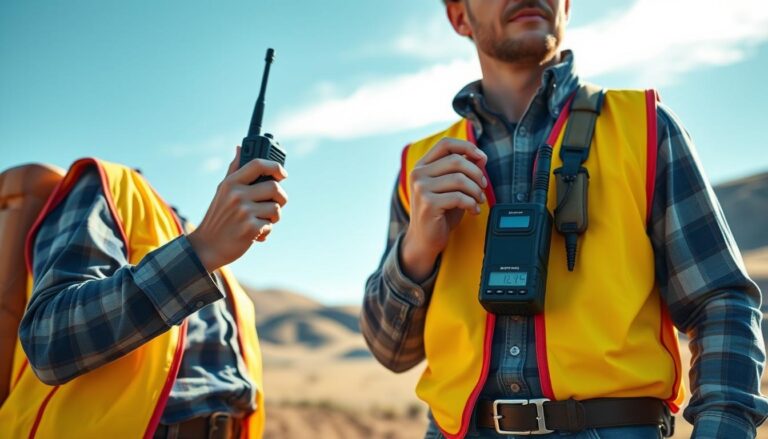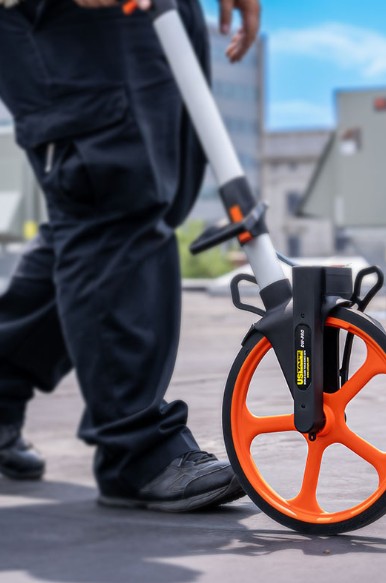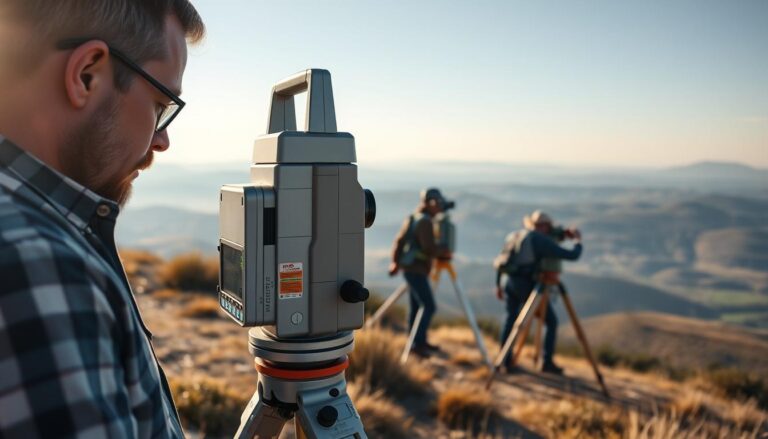Discover How Magnetic Locators Find Hidden Utilities
Magnetic locators are key in finding hidden utilities under the ground. They are very important in surveying, construction, and keeping utilities running well.
Tools like CST/Berger MagnaTrack and Schonstedt are known for their great work in underground utility detection. They help experts avoid expensive mistakes and keep everyone safe when digging.
The big deal about magnetic locators is how well they find hidden utilities. This helps avoid dangers and keeps projects on track.
Key Takeaways
- Understanding the role of magnetic locators in detecting hidden utilities.
- Recognizing the importance of accurate underground utility detection.
- Familiarity with leading brands like CST/Berger MagnaTrack and Schonstedt.
- Awareness of the industries that benefit from magnetic locators.
- The impact of magnetic locators on safety and project efficiency.
The Science Behind Magnetic Detection
Magnetic detection works by finding changes in the Earth’s magnetic field. Tools like CST/Berger MagnaTrack and Schonstedt use this method. They help find metal objects hidden underground.
Principles of Ferromagnetic Detection
Ferromagnetic detection is about how metals react with magnetic fields. Ferrous objects can be magnetized. This lets them change the Earth’s magnetic field. Special sensors can pick up these changes.
- The presence of ferrous materials causes a disturbance in the Earth’s magnetic field lines.
- Magnetic locators are designed to detect these disturbances.
- The detection process involves measuring the changes in the magnetic field’s strength and orientation.
Earth’s Magnetic Field and Distortion Patterns
The Earth’s magnetic field is the baseline for detecting changes. Distortion patterns depend on the object’s size, shape, and position. Knowing these patterns helps find underground utilities accurately.
How Do Magnetic Locators Work to Detect Underground Utilities
Magnetic locators are key for finding underground utilities. They work by spotting changes in the Earth’s magnetic field. These changes happen because of ferromagnetic materials underground.

Passive vs. Active Detection Methods
Magnetic locators use two main ways to find underground utilities: passive and active. Passive detection looks at the Earth’s magnetic field and how it changes near ferromagnetic objects. It doesn’t send out any signals. On the other hand, active detection sends a signal that interacts with underground utilities, helping to find them.
Choosing between passive and active detection depends on the job and the environment. For example, Schonstedt magnetic locators use active detection. They give very accurate location information.
Signal Processing and Interpretation
After detecting a signal, whether passively or actively, it goes through signal processing. This makes the signal better and pulls out important details. It filters out background noise and boosts the signal to show where the utility is.
Audio Signal Indicators
Many magnetic locators, like the CST/Berger MagnaTrack, have audio signal indicators. These sound cues tell the user when they’re near underground utilities. The sound can change in pitch or volume to show how close and strong the signal is.
Visual Display Readings
Modern magnetic locators also have visual display readings. These show a picture of the detected utilities. The visual cues give more detailed info about the utility’s depth and direction.
Types of Magnetic Locators and Their Components
Magnetic locators come in different designs for various detection needs. The main difference is in their sensor technology and how well they detect things.
These locators are sorted by their sensor setup, among other things. Knowing these differences helps pick the best tool for the task.
Single-Axis vs. Dual-Axis Sensors
Single-axis sensors find magnetic fields in one direction. They’re good for simple tasks. On the other hand, dual-axis sensors can find fields in two directions. This makes them better at finding utilities accurately.
Dual-axis sensors are better at finding utilities because they can detect in two planes. This is really helpful in places where utilities are not easy to find.
Key Components of Modern Magnetic Locators
Modern magnetic locators use advanced parts for better accuracy. Two key parts are:
- Sensor Technology: New sensors make detection more sensitive and accurate. For example, CST/Berger MagnaTrack and Schonstedt locators have top-notch sensors.
- Control Units and Displays: Easy-to-use control units and clear displays help users understand the data. Today’s locators have simple interfaces that make finding things easier.
Putting these parts together makes locators more reliable and efficient. As technology gets better, magnetic locators will keep getting more advanced. They’ll work better in all kinds of places.
Materials That Can Be Located Using Magnetic Technology
Knowing what magnetic technology can find is key for using magnetic locators well. These tools are made to spot ferrous materials. These are things that have iron or iron alloys in them.
Ferrous vs. Non-Ferrous Materials
There’s a big difference in what magnetic tech can find. Ferrous materials are things like steel and iron alloys. They really stick to magnets. But, non-ferrous materials like copper and plastic don’t have iron. So, they don’t get pulled by magnets and can’t be found by magnetic locators.
- Ferrous materials: Iron, steel, and their alloys
- Non-ferrous materials: Copper, aluminum, plastic
Limitations of Magnetic Detection
Magnetic locators work great for finding ferrous stuff. But, they have some big downsides. They can’t find non-ferrous materials. This is a big problem in some cases.
For example, if you’re looking for copper lines, you need something else. Also, things like dirt and metal can mess with how well these tools work.
- Cannot detect non-ferrous materials
- May be affected by environmental interference
- Requires alternative methods for non-ferrous utilities
Tools like those from CST/Berger MagnaTrack and Schonstedt are super useful. They help in construction and fixing utilities. They’re great at finding ferrous stuff.
CST/Berger MagnaTrack: Technology and Capabilities
The CST/Berger MagnaTrack uses sensor technology to detect underground utilities. It’s a key tool for many industries because of its precision.
The MagnaTrack’s sensor technology is what makes it so effective. Let’s explore this technology further.
MagnaTrack’s Sensor Technology
The MagnaTrack has dual-axis sensors for better magnetic field detection. These sensors can find both ferrous and some non-ferrous materials, though with different levels of accuracy.
- High sensitivity to magnetic fields
- Ability to detect a wide range of materials
- Robust design for challenging environments
Sensitivity Settings and Detection Depth
The CST/Berger MagnaTrack has sensitivity settings that can be adjusted. This makes it versatile for different needs.
The depth it can detect varies with the sensitivity and material type. It can find utilities from a few feet to several feet underground.
- Adjust sensitivity for different materials
- Optimize detection depth for various environments
- Enhance accuracy with precise settings
Practical Applications of MagnaTrack Locators
The CST/Berger MagnaTrack is used in construction, utility maintenance, and excavation. It helps avoid damage and keeps sites safe.
Some uses include:
- Detecting underground pipes and cables
- Locating hidden utilities before excavation
- Mapping underground infrastructure
Schonstedt Magnetic Locators: Features and Applications
Schonstedt magnetic locators have changed the game in finding underground utilities. They use advanced tech to detect these utilities accurately and quickly. This makes them a must-have for professionals in the field.
The Schonstedt brand is all about innovation and quality. Their magnetic locators meet a wide range of needs, from simple to complex tasks. With many models to choose from, users can find the perfect one for their needs.
Proprietary Technology
Schonstedt’s unique tech sets their magnetic locators apart. Their advanced algorithms and sensors help find underground utilities with precision. The ferromagnetic detection principles also help identify metallic objects, even in tough spots.
This tech offers several benefits, including:
- Improved detection accuracy
- Enhanced sensitivity
- Increased reliability
Model Comparison and Specialized Features
Schonstedt has a variety of magnetic locator models, each with special features. The GA-92XTd and GA-52Cx are favorites for their depth measurement and signal strength indication.
When looking at Schonstedt models, consider what you need. Think about detection depth, sensitivity, and any special features. Here’s a comparison of some key features:
| Model | Detection Depth | Sensitivity | Specialized Features |
|---|---|---|---|
| GA-92XTd | Up to 20 feet | High sensitivity | Depth measurement, signal strength indication |
| GA-52Cx | Up to 15 feet | Adjustable sensitivity | Audio and visual signal indication |
Field Performance and Reliability
Schonstedt magnetic locators are reliable and perform well in the field. Their advanced tech and sturdy design mean they can handle tough environments and give accurate results.
Many professionals in the industry praise Schonstedt magnetic locators. They’re known for their reliability and accuracy, making them crucial for utility detection and excavation projects.
Step-by-Step Guide to Using a Magnetic Locator
Using magnetic locators well needs the right setup and method. These tools, like those from CST/Berger MagnaTrack and Schonstedt, find underground utilities with great accuracy. To get the best results, knowing how they work and following a set process is key.
Preparation and Equipment Setup
Before starting, it’s important to get the magnetic locator ready and know the area. This means calibrating the device and understanding the terrain.
Calibration Procedures
Calibration makes sure the magnetic locator works right. It involves adjusting the device’s sensitivity to fit the environment. Getting calibration right is essential for good detection.
Environmental Assessment
Knowing the environment helps spot possible interference. Look for other magnetic fields or metal objects that might mess with the detection. Understanding the environment is key for finding utilities well.
Scanning Techniques and Patterns
Good scanning techniques are important for finding everything. It’s about using a methodical pattern to scan the area well.
Grid Pattern Scanning
Grid pattern scanning divides the area into a grid and scans along the lines. This method covers everything well and helps find utilities’ exact spots. Grid scanning works best for big areas.
Pinpointing Techniques
After finding a utility, pinpointing techniques help find its exact spot. This means adjusting the scan to focus on the signal. Pinpointing needs precision and patience.
Interpreting Audio and Visual Signals
Magnetic locators give both sound and visual signals for finding utilities. Knowing how to read these signals is crucial for accurate detection.
The sound signal changes pitch or volume based on how close you are to the utility. Visual signals show the signal strength on a screen. Using both sound and visual cues makes detection more accurate.
Common Challenges and Troubleshooting
The accuracy of magnetic locators can be affected by many environmental factors. Users of devices like the CST/Berger MagnaTrack and Schonstedt locators often face challenges. These can impact how well they detect things.
Environmental Interference Factors
Environmental interference is a big challenge for magnetic locators. Two main factors cause this problem: electrical interference and soil conditions.
Dealing with Electrical Interference
Electrical interference comes from nearby power lines, radio signals, or other electromagnetic sources. To reduce this, users can adjust their locator’s sensitivity or change the frequency. For example, the CST/Berger MagnaTrack lets users adjust sensitivity to lessen electrical interference.
Soil Conditions and Their Impact
Soil conditions, like mineralization and moisture, can also affect magnetic locators. Soils with lots of minerals or water can mess up the magnetic field. Knowing the soil and adjusting the locator’s settings can help solve these issues.
Overcoming Detection Obstacles
Other obstacles, like dense vegetation, built-up areas, or complex underground structures, can also be a problem. Using the right scanning methods and combining magnetic locators with other technologies can help. This way, users can get past these obstacles.
Effective troubleshooting means knowing what your magnetic locator can do. By learning about its features, like those in Schonstedt locators, users can tackle common problems. This helps them get more accurate results.
Practical Applications for Different Industries
Magnetic locators are key tools in many fields like construction, utility maintenance, and surveying. They find ferromagnetic materials, making them very useful. This is true for many tasks.
Construction and Excavation Projects
In construction and digging, tools like the CST/Berger MagnaTrack find hidden utilities. This stops damage during digging. It keeps workers safe and saves money on repairs. Accurate detection makes digging plans better.
Utility Maintenance and Repair
Utility companies use magnetic locators for upkeep and fixes. Schonstedt devices help find underground cables and pipes. This leads to efficient maintenance scheduling and less service outages. The devices’ precision is key for keeping utility networks safe.
Surveying and Mapping Applications
In surveying and mapping, magnetic locators help make detailed underground maps. They find ferromagnetic markers and utilities. This is vital for urban planning and development, as experts say.
“The use of magnetic locators has revolutionized the way we map and manage underground infrastructure.”
Best Practices for Accurate Utility Location
Best practices are key to getting accurate utility location with magnetic locators. Tools like CST/Berger MagnaTrack and Schonstedt help find underground utilities. But, they work best when used right and follow certain rules.
Marking and Documentation Procedures
Marking and documenting accurately are vital for good utility location. After finding a utility with a magnetic locator, mark its spot on the ground. This is usually done with paint or flags. Clear marking helps other teams, like excavation crews, understand the location.
Keep a record of the utility type, depth, and other important details. You can write it down or use digital tools for easy access later.
Combining Magnetic Location with Other Technologies
Using magnetic location with other techs can make it even better. Ground-Penetrating Radar (GPR) is great for finding non-ferrous utilities that magnetic locators might miss. Combining data from magnetic locators and GPR gives a clearer picture of what’s underground.
Using different technologies also helps check if the utilities found are correct. This lowers the chance of mistakes.
Safety Considerations When Locating Underground Utilities
Keeping safe while finding underground utilities is key to avoiding accidents and following the law. Tools like CST/Berger MagnaTrack and Schonstedt magnetic locators are crucial in many fields, like building and fixing utilities.
Safety considerations are very important when using these tools. It’s vital to know where underground utilities are before digging or building to stay safe.
Pre-Excavation Safety Protocols
Setting up pre-excavation safety protocols is essential to lower risks. This means doing detailed site checks with magnetic locators to find underground utilities. It’s important for workers to know how to read the signals and what their tools can do.
By scanning the area carefully and wearing the right safety gear, accidents can be greatly reduced.
Legal Requirements and Compliance
Following legal requirements and standards is not just a must; it’s also key for safety. Laws differ by place, but they often demand approved ways to find underground utilities before digging.
Using top-notch magnetic locators, like those from CST/Berger and Schonstedt, helps meet these standards. This boosts safety on the job site.
Conclusion
Magnetic locators are key in finding hidden underground utilities. They keep projects safe and prevent damage. Devices like CST/Berger MagnaTrack and Schonstedt locators make finding utilities more accurate.
We’ve looked at how magnetic detection works and the types of locators out there. We’ve also seen their uses in different fields. Knowing how these tools work helps professionals handle underground detection better.
Magnetic locators are essential in construction, utility work, and surveying. They help find underground utilities precisely. As technology gets better, magnetic locators will keep being crucial for safe and efficient projects.






